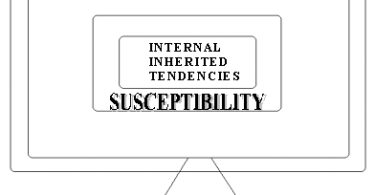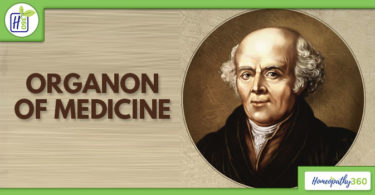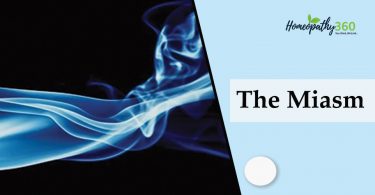UNDERSTANDING PSYCHIATRY IN THE LIGHT OF HAHNEMENNIAN CLASSIFICATION OF MENTAL DISEASES
WHAT IS MENTAL HEALTH AND MENTAL ILLNESS?
MENTAL HEALTH(WHO)- it is a state of well being in which every individual realizes his or her own potential , can cope with the normal stresses of life, can work productively and fruitfully and is able to make a contribution to her or his community.
MENTAL ILLNESS(WHO) – mental disorders comprise a broad range of problems, with different symptoms. however, they are generally characterized by some combination of abnormal thoughts, emotions, behaviour and relationship with others.
MENTAL DISEASES BY DR. HAHNEMANN
APHORISM 210– Of psoric origin are almost all those diseases that I have above termed one-sided, which appear to be more difficult to cure in consequence of this one-sidedness, all their other morbid symptoms disappearing, as it were, before the single, great, prominent symptom. Of this character are what are termed mental diseases. They do not, however, constitute a class of disease sharply separated from all others, since in all other so called corporeal diseases the condition of the disposition and mind is always altered;1 and in all cases of disease we are called on to cure the state of the patient’s disposition is to be particularly noted, along with the totality of the symptoms, if we would trace an accurate picture of the disease, in order to be able there from to treat it homoeopathically with success.
THE UNTOLD STORY OF DR. HAHNEMANN
Hahnemann was “one of the earliest, if not the very first”[ibid] to advocate “treatment of the insane by mildness rather than coercion”. In fact it was on 2nd sept in the year 1793, that “Pinel made his first experiment of unchaining maniacs in the Bicetre” which was 15 months after Hahnemann had commenced treating Klockenbring. His cure of Klockenbring “cause a sensation” (Richard Haehl) at the time and certainly reveals him as the ORIGINATOR OF “entirely new methods in the treatment of mental patients ,independent of his famous contemporaries.”
BASIS AND EVOLUTION OF CLASSIFICATION OF MENTAL DISEASES
Evolution of International Classification Of Diseases (ICD) And The Diagnostic And Statistical Manual Of Mental Disorders(DSM):
ICD- The ICD historical lineage traces back to the 19th century.The first version of ICD had its approx ORIGIN at “First International Statistical Congress, held in Brussels” for uniform classification of ’cause of death’.The resulting classification organized disease by Anatomical site in ‘International history of causes of Death’ that was adopted by Institution Of International Statistics.WHO was founded immediately after 2nd world war (By US for the preparation of 6th revision of ‘International list of causes of Death’.Establishment of ‘International list of causes of Morbidity was done’.1st version to use ICD title- “ International classification of disease, Injuries and Causes of Death WHO (1949).”
DSM:-
US efforts to classify disorders for “Causes Of Mortality” had been ongoing since 1840 by US census.
American Medico Psychological Association (APA) was founded in 1917 and the 10th Edition evolved as “ Statistical Manual For The Use Of Hospitals Of Mental Disease”.During Second World War – “Medical 203” was established by US Army and the first version of DSM was influenced by APA and ICD.Thereafter ICD and DSM became intertwined.
CO-RELATION OF HAHNEMANIAN CLASSIFICATION OF MENTAL DISEASES WITH ICD-10
F00-F09 : ORGANIC MENTAL DISORDERS
Disorders with a known organic cause.
It mainly includes delirium, dementia, and organic amnesic syndrome.
Explained in Aphorism 215:
Almost all the so called mental and emotional diseases are nothing more than corporeal disease in which the symptoms of derangement of the mind and disposition peculiar to each of them is increased whilst the corporeal symptoms decline (more or less rapidly) till it a length attains the most striking one-sidedness, almost as though it were a local disease in the invisible subtle organ of the mind or disposition.
F10-F19: MENTAL AND BEHAVIOURAL DISORDERS DUE TO PSYCHOACTIVE SUBSTANCE USE
The term encompasses acute intoxication, harmful use, dependence syndrome, withdrawal state with delirium, psychotic disorder and amnesic syndrome
For a particular substance these conditions may be grouped together as, for example, alcohol disorders, cannabis use disorders, stimulant use disorders. The physical and psychological effects diminishes as the quantity of alcohol reduces from the blood over time.
Explained in APHORISM 7 AND APHORISM 221
APHORISM 7: Now, as in a disease, from which no manifest exciting or maintaining cause (causa occasionalis) has to be removed1, we can perceive nothing but the morbid symptoms, it must (regard being had to the possibility of a miasm, and attention paid to the accessory circumstances, § 5) be the symptoms alone by which the disease demands.
APHORISM 221: If, however, insanity or mania (caused by fright, vexation, the abuse of spirituous liquors, etc.)have suddenly broken out as an acute disease in the patients ordinary calm state.
F20-F29: SCHIZOPHRENIA, SCHIZOTYPICAL AND DELUSIONAL DISORDER
schizophrenia is characterized by disturbances in thought and verbal behaviour, perception, affect, motor behaviour and relationship to the external world.
As explained in APHORISM 225
There are, however, as has just been stated, certainly a few emotional diseases which have not merely been developed into that form out of corporeal diseases but which, in an inverse manner, the body being but slightly indisposed, originate and are kept up by emotional causes, such as continued anxiety, worry, vexation, wrongs and the frequent occurrence of great fear and fright. This kind of emotional diseases in time destroys the corporeal health, often to a great degree.
F31-F39: MOOD(AFFECTIVE) DISORDERS
TWO TYPES OF EMOTIONS:Classification of mood disorders:. Manic episode, Depressive episode, Bipolar (affective) disorder, Recurrent depressive disorder, Persistent mood disorder and other mood disorders
As explained in APHORISM 210 AND ITS FOOTNOTE
APHORISM 210: Of psoric origin………. They do not, however, constitute a class of disease the condition of the disposition and mind is always altered;1 and in all cases of disease we are called on to cure the state of the patient’s disposition is to be particularly noted, along with the totality of the symptoms.
FOOTNOTE: do we not meet with a mild, soft disposition in patients who have for years been afflicted with the most painful diseases subdue the disease and restore the patient to health – as is frequently done in homoeopathic practice horrified at the frightful alteration in his disposition. He often witnesses the occurrence of ingratitude, cruelty, refined malice and propensities most disgraceful and degrading to humanity, which were precisely the qualities possessed by the patient before he grew ill. A clear-headed person not infrequently becomes obtuse of intellect, while one ordinarily weak-minded becomes more prudent and thoughtful;
MOOD DISORDRS IN RELATION TO MIND AND DISPOSITION
.
APHORISM 211: “…..the state of the disposition of the patient often chiefly determines the selection of the homoeopathic remedy, as being a decidedly characteristic symptom….”
APHORISM 213: “…. in every case of disease, even in such as are acute, observe, along with the other symptoms, those relating to the changes in the state of the mind and disposition”
APHORISM 216: “..corporeal disease that threatens to be fatal – a suppuration of the lungs, or the deterioration of some other important viscus, or some other disease of acute character, e.g., in child-bed, etc. – becomes transformed into insanity, into a kind of melancholia or into mania …”
APHORISM 217: (role in treatment)- “…. precise character of the chief symptom, of the peculiar and always predominating state of the mind and disposition, in order to discover, for the purpose of extinguishing the entire disease….”
APHORISM 218: “…before it degenerated into a one-sided increase of the PSYCHICAL symptom, and became a disease of the mind and disposition. ..”
APHORISM 221: If, however, insanity or mania (caused by fright, vexation, the abuse of spirituous liquors, etc.) have suddenly broken out as an acute disease in the patient’s ordinary calm state,…”
APHORISM 222 AND 223 (treatment): “….it is true, has now become once more LATENT but is quite ready to break out anew; if this be done, there is no fear of another similar attack..” . “……. the speedy occurrence of a new and more lasting the severe fit, during which the psora usually develops itself completely, and passes into either a periodic or continued mental derangement….”
F40-F48: NEUROTIC, STRESS RELATED AND SOMATOFORM DISORDERS
This includes: Anxiety, dissociative, stress related, somatoform and other non-psychotic mental disorders.
As explained in APHORISM 225:
There are, however, as has just been stated, certainly a few emotional diseases which have not merely been developed into that form out of corporeal diseases, but which, in an inverse manner, the body being but slightly indisposed, originate and are kept up by emotional causes, such as continued anxiety, worry, vexation, wrongs and the frequent occurrence of great fear and fright. This kind of emotional diseases in time destroys the corporeal health, often to a great degree.
F50-F59: BEHAVIOURAL SYNDROMES ASSOCIATED WITH PHYSIOLOGICAL DISTURBANCES AND PHYSICAL FACTORS
These were previously called psychosomatic disorders.
Classified as: .eating disorders, sleep disorders, sexual disorders and postpartum psychiatric disorders,psychosomatic disorders.
CHILD PSYCHIATRY
F70-F79 MENTAL RETARDATION: (Caused by biological factors and also by psycho-social factors) such as chromosomal abnormalities , metabolism errors I.e., Phenylketonuria, infections in perinatal period
F80-F89 DISORDERS OF PSYCHOLOGICAL DEVELOPMENT: predominantly biological causes with h/o perinatal CNS insult, epilepsy, increased serotonin level, and neurotransmitters as in pervasive developmental disorder, Autism
F90-F98 BEHAVIOURAL AND EMOTIONAL DISORDERS WITH ONSET USUALLY OCCURING IN CHILDHOOD AND ADOLESCENCE : causes minimal brain damage , genetics,so more likely to be biological factor, eg. ADHD and conduct disorder
As explained in APHORISM 204
If we deduct all chronic affections, ailments and diseases that depend on a persistent unhealthy mode of living, (§ 77),………………… external symptoms.
APHORISM 5: “….the ascertainable physical constitution of the patient (especially when the disease is chronic), his moral and intellectual character, his occupation, mode of living and habits, his social and domestic relations, his age, sexual function, etc., are to be taken into consideration”
APHORISM 7: “….in a disease, from which no manifest exciting or maintaining cause (causa occasionalis) has to be removed1, we can perceive nothing but the morbid symptoms, it must (regard being had to the possibility of a miasm, and attention paid to the accessory circumstances, § 5) be the symptoms alone by which the disease demands…..”
APHORISM 81 FT NT: ”……. physical and mental training of youth, both of which may have been neglected, delayed or carried to excess, or on their abuse in the business or conditions of life, in the matter of diet and regimen, passions, manners, habits and customs of various kinds”
APHORISM 94 : ” While inquiring into the state of chronic disease, the particular circumstances of the patient with regard to his ordinary occupations, his usual mode of living and diet, his domestic situation, and so forth, must be well considered and scrutinized, to ascertain what there is in them that may tend to produce or to maintain disease, in order that by their removal the recovery may by prompted……”
APHORISM 94 FOOTNOTE: In chronic diseases of females it is specially necessary to pay attention to pregnancy, sterility, sexual desire, accouchements, miscarriages, suckling, and the state of the menstrual discharge…….”
Treatment: As per classification given by Dr Hahnemann
Mental diseases of corporeal origin ( Aphorisms 217-220)
Aph 217– Totality should be formed by a combined picture of mental and physical symptoms.
Aph 218-Patient condition of health prior to become one sided disease must be ascertained from friend.
Aph 220-Antipsoric to be prescribed from the very beginning covering both physical and mental symptoms.
Mental diseases (Insanity or Mania) as sudden acute diseases ( Aphorisms 221-223)
Aph 221– First treated with non-antipsoric medicines like (Aco,Bell etc) in highly potentised minute doses.
Aph 221– No time should be lost to complete the cure by prescribing antipsorics because such diseases arises as an outburst of latent miasmatic state.
Aph 222– Strict diet and regimen must be followed.
Mental diseases of Doubtful origin (Aphorism 224)
Aph -224 If mental diseases arouses from faults of education, bad practices, corrupt morals etc then it improves by friendly exhortation, consolatory arguments, serious representations and sensible advice.
Aph- 224 If mental diseases of corporeal origin then it will aggravate by such advices(as mentioned above).
Mental diseases of emotional origin (Aphorism 226-227)
Aph -226 When they are still recent and have not made great inroads into corporeal state then can be treated by Psychical remedy along with appropriate diet and regimen.
Aph -227 These are also psoric disease, so for there radical cure anti-psoric treatment should be given for security.
References:
- Dudgeon R.E., Organon of Medicine, Fifth And Sixth Edition Combined, Samuel Hahnemann, B. Jain Publisher (P) Ltd.
- Hahnemann Samuel, The Lesser Writings Of Hahneman, New York, 1852
- http://www.who.int





